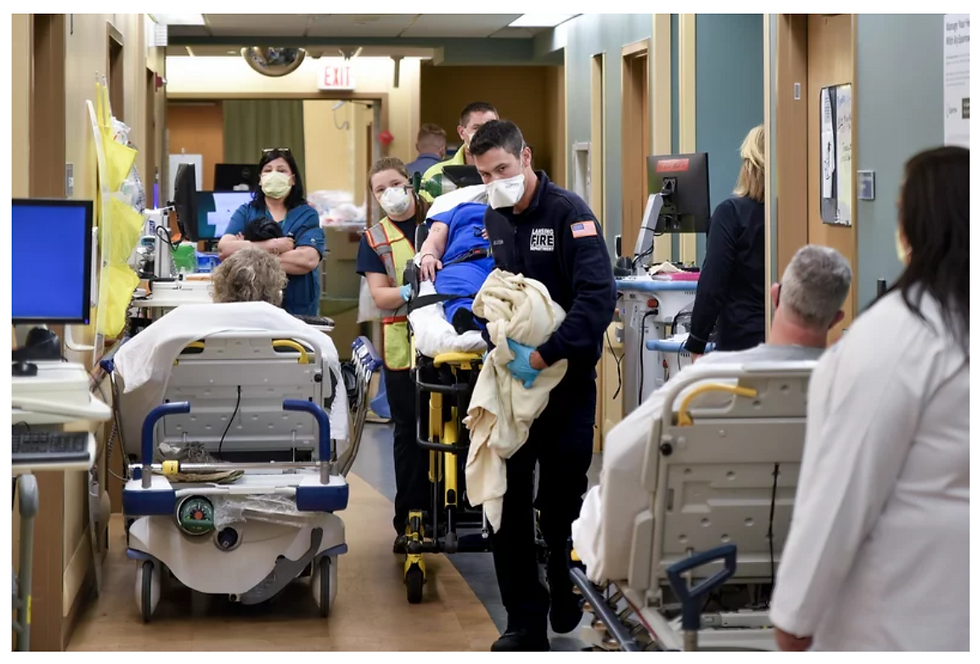Can Corstrata's Wound Assessment expand YOUR "Digital Front Door"? Exploring Cost Effectiveness
- Joe Ebberwein

- Sep 29, 2021
- 3 min read
Updated: Oct 18, 2021
By Joseph Ebberwein, CFO

Telehealth continues to see surges in the marketplace. The McKinsey & Company 2021 Telehealth Update offers incredible insights.
Administrators and Clinical Leaders may want to take note: Telehealth options are being expanded in all care settings, and either you are leading in your market(s) or you will be trying to catch up in 2022.
Utilization is 38X Higher! That’s right, utilization may have peaked in April 2020, but more than 15 months later, Telehealth utilization remains at 38x that of pre-pandemic levels. And, most interesting is consumers remain favorably inclined to look for ways to utilize telehealth options. It shouldn’t be a surprise. As the world returns to work, there isn't the driver of COVID-19 concerns, but there is certainly an emerging time shortage. Families are stretched thin on time and resources, and alternative options for care are of interest. At the same time, physicians are looking to return patient appointments to pre-pandemic levels, and offering telehealth is now viable AND efficient.
BUT…for Health Systems, Telehealth has become a “Digital Front Door" and a valuable differentiator in service and value to all Stakeholders. Triage and navigation of patients, based on condition criteria, is critical to improved outcomes and healthy margins. At the same time, payers want lower costs of care. Access to Specialists ensures retention of the consumer in YOUR health system and at a lower cost, especially for patients outside of major metropolitan areas. Virtualization of care is also foundational to the emerging models of Hospital at Home with care being shifted to the patient’s home.
The McKinsey & Company 2021 Report presented an interesting comparison of leading and lagging Specialties with regards to Telehealth adoption. Certain specialties lend themselves exceedingly well to a Telehealth model, such as Psychiatry and Substance Counseling. Even Endocrinology and Rheumatology found innovations in the Telehealth wave. Yet, some specialties struggle to make telehealth beneficial and, most surprising are those that could benefit greatly, but were slow adopters. Dermatology, Cardiology, and post-Surgical care have significant history in devices that support remote-patient monitoring with older models of telemedicine. Opportunities abound for these specialties to move forward with innovative solutions.
Corstrata’s work in Skin Health, Wound Care, and Ostomies, at the intersections of multiple primary specialties of Endocrinology, Dermatology, Cardiology, and Surgery, provides a significant number of immediate value propositions.
#1 – Effective Clinical Assessments. The ability to have a Wound Ostomy nurse (WOCN) complete an Assessment creates higher degrees of clinical insight for the physician making treatment decisions in the post-acute environment. The tight labor market makes Virtual Assessments immediately of interest. No different than standing in the patient’s home, Corstrata validates etiology and staging of wounds with the use of specialty technology and creates confidence for the physician in the implementation of an effective plan of care for the patient.
#2 - ‘Best Practice’ Orders and Advanced Wound Treatment. With clarity in the clinical condition, physicians can order with great confidence. While the use of certain Advanced Wound Treatment products is still emerging in post-acute, Corstrata assists physicians in understanding Formulary differences and options that are most appropriate in the home setting.
#3 – Improved Patient Education. Patient and family involvement makes a significant difference in treating and healing. Clinical providers are only in the home for a very short time, and often there are so many other clinical conditions being addressed, education and retention of information for wound care get lost in the shuffle. Virtualizing certain patient visits can be powerful AND convenient. One particular study states patients fail to retain between 40-80% of education in a medical consultation, which supports Virtual check-ins as a viable way to manage questions and reinforce education with patients in between in-person visits.
It’s no wonder the Investor community continues to surge in Telehealth. The first 7 months of 2021 paralleled the investments made in all of 2020, with each time period exceeding $14B in early and mid-stage companies.
Check out how Corstrata can assist you in reaching your post-acute Telehealth goals.




Comments